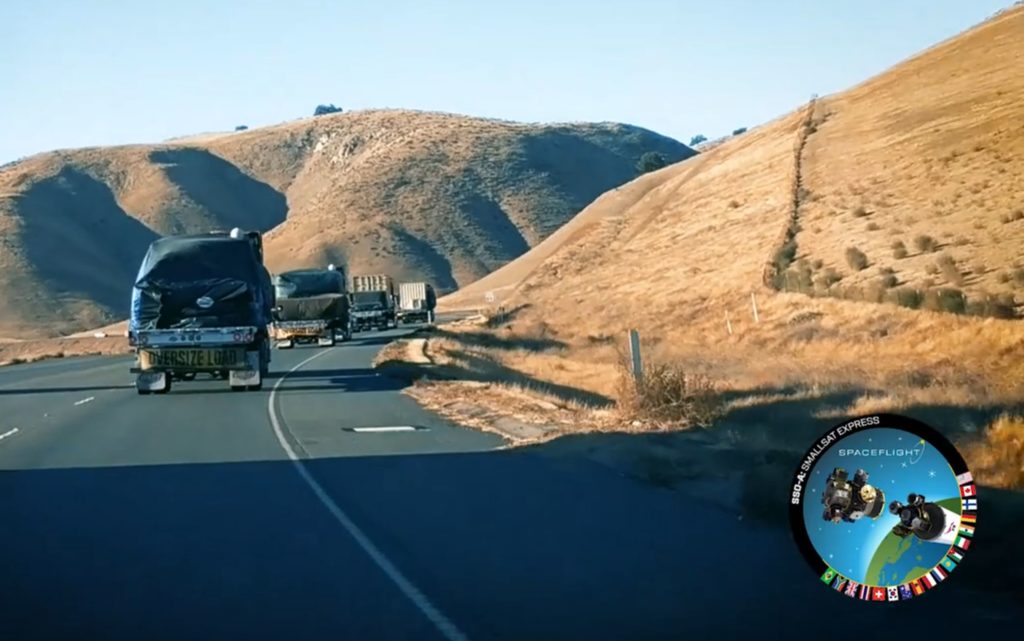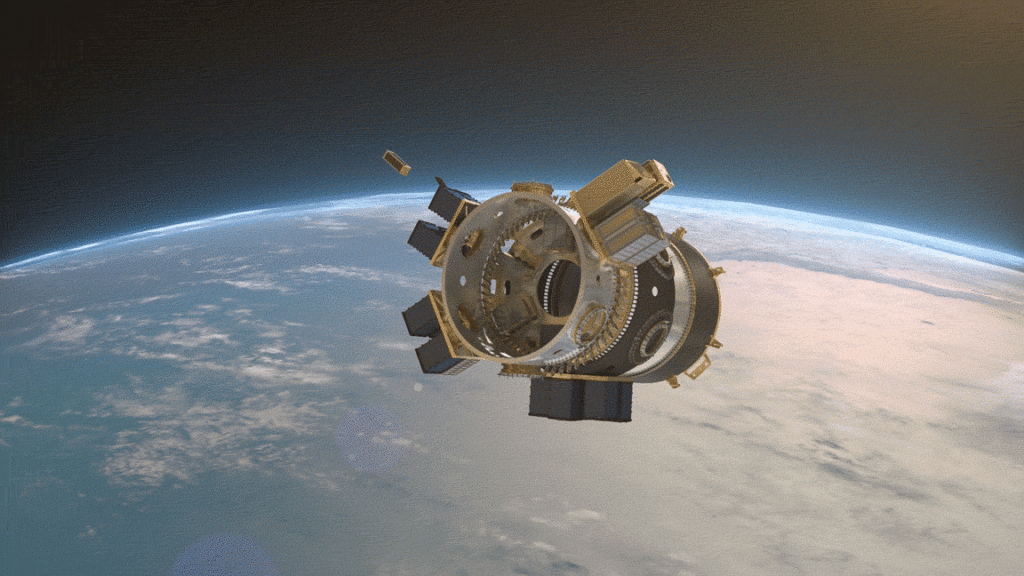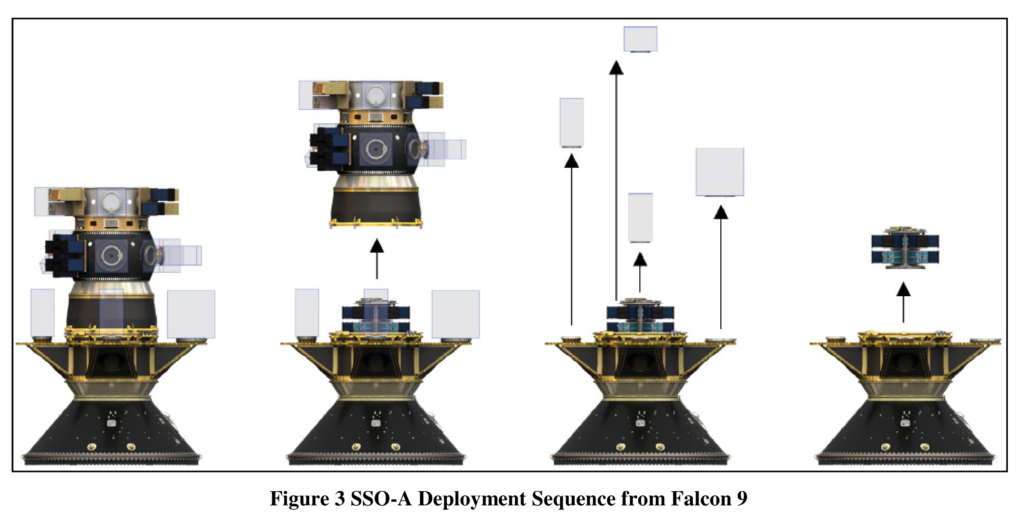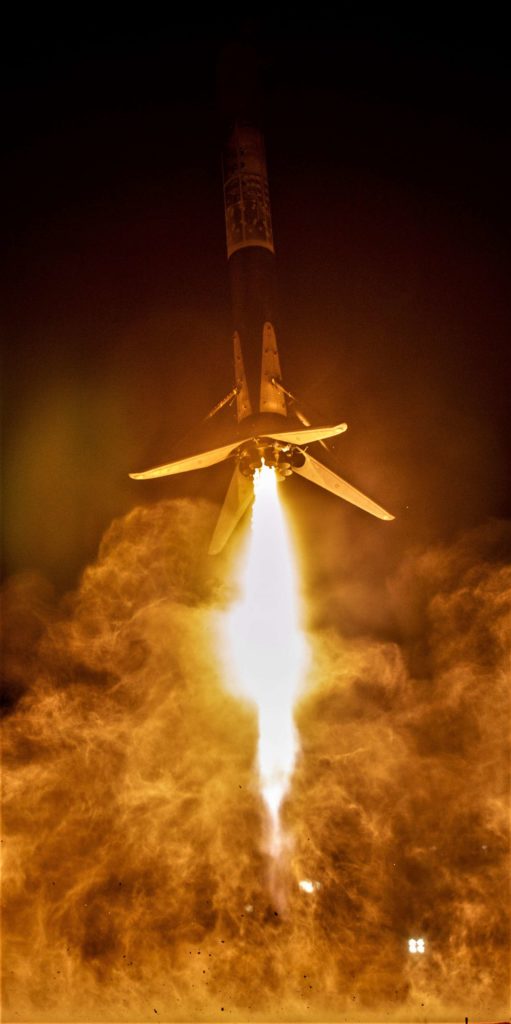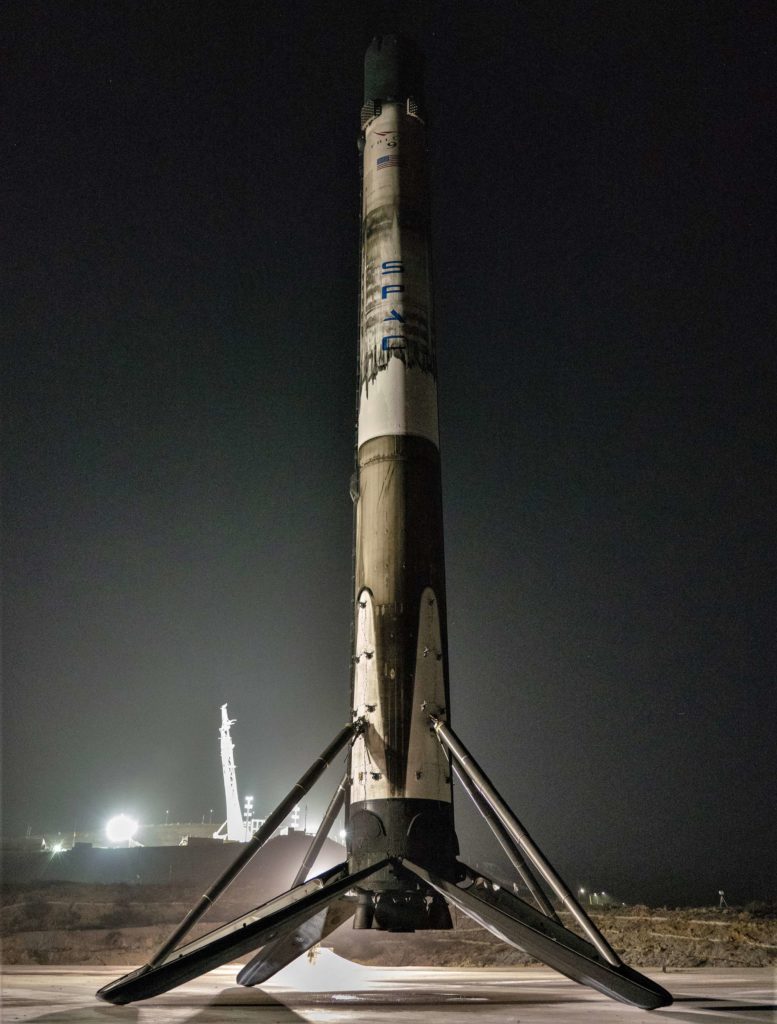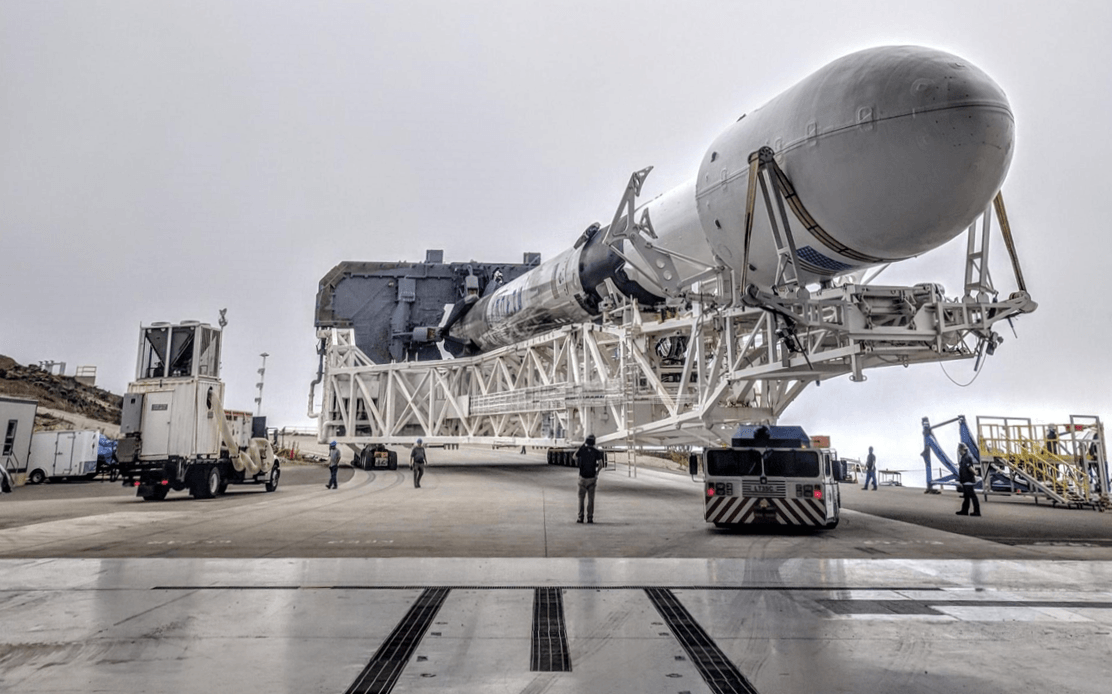
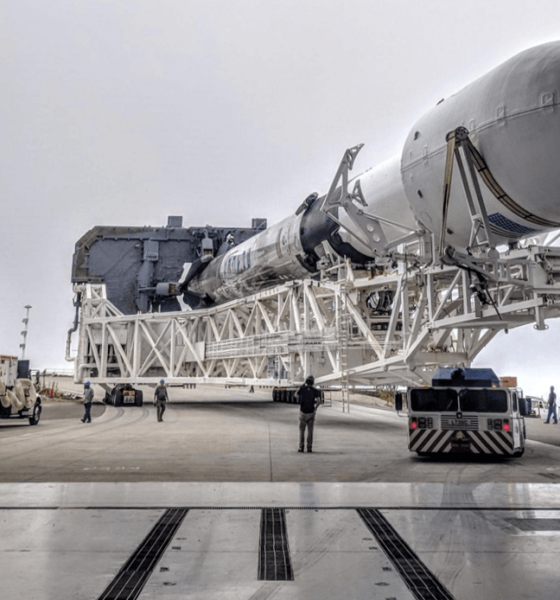
SpaceX
SpaceX targets Falcon 9 reusability milestone on first dedicated rideshare launch
SpaceX’s first dedicated rideshare – a collection of small satellites manifested for launch and organized by a third party – is into the final stretches of prelaunch preparations, readying for a ride to orbit on a flight-proven Falcon 9 no earlier than (NET) November 19th.
While unconfirmed, it appears that SpaceX is working to make SSO-A’s launch the first time the same Falcon 9 booster flies three missions, an accomplishment that may look minor up close but is actually a major step forward for orbital-class reusable rockets.
Who doesn't love a CONVOY? Watch our spacecraft start its journey to the launch pad here: https://t.co/97MxmjnKfl #ssoa #smallsatexpress
— Spaceflight (@SpaceflightInc) October 22, 2018
SSO-A organizer and launch customer Spaceflight Industries announced yesterday (Oct. 22) that the collection of several dozen satellites – called a “stack” when integrated together in and on Spaceflight’s custom dispenser – arrived at Vandenberg Air Force Base (VAFB) within the last few days, setting the stage for post-shipment health checkouts and encapsulation inside Falcon 9’s payload fairing.
“The assembled stack has now traveled by road 1,075 miles (1730 km) from Seattle. It will travel another 357 miles (575 km) to reach its targeted orbit. So we could say that the longest part of the journey is over…but the most exciting part is still to come!”
- Spaceflight’s convoy of support vehicles follow as the stack is shipped from Auburn, WA to Vandenberg, CA, a journey of ~1000 miles. (Spaceflight)
- Spaceflight’s SSO-A Upper Free Flyer visualized deploying cubesats shortly after launch on Falcon 9. (Spaceflight)
- SSO-A’s fairly intricate deployment sequence. (Spaceflight)
Arrival at the launch site is a huge milestone for any satellite or spacecraft and that is perhaps even more so the case for massive rideshare missions like SSO-A. The task of wrangling together dozens upon dozens of satellites of all different shapes and sizes – all coming from dozens of customers spread across the world – is understandably unenviable from a logistical standpoint. Despite the major hurdles and the apparent loss or slippage of a few dozen previously-planned satellites, it appears that Spaceflight Industries has made it through logistical hell and can now begin to focus on prelaunch operations after arriving at or near SpaceX’s California launch site.
If there were any stragglers with satellites that were not quite able to make it to Spaceflight’s Auburn, WA integration facilities ahead of shipment to California, there may still be a very limited time-frame for those customers to redirect their spacecraft to California and integrate with the full stack before the whole thing is closed up inside Falcon 9’s payload fairing.
- Falcon 9 B1048.2 landed at LZ-4 after its second successful launch. (SpaceX)
- Falcon 9 B1048 landed at LZ-4 after its second launch and is now being refurbished on the opposite coast. (SpaceX)
- A render of Spaceflight’s SSO-A dispensers attached to Falcon 9’s second stage.
Third time’s the charm
For Falcon 9, SSO-A is equally exciting. Likely to fly on either booster B1048 or B1046, both now with two successful launches on their records, this mission could mark the first time a Falcon 9 booster completes three orbital-class missions. If the rocket managed a successful recovery, either at SpaceX’s recently-inaugurated Landing Zone-4 (LZ-4) or well-worn drone ship Just Read The Instructions, it would pave the way for its fourth reflight and beyond. SpaceX designed Falcon 9 Block 5 to be capable of a minimum of 10 launches per booster with little to no refurbishment, potentially enabling 100+ flights each with regular maintenance.
If schedules hold, SSO-A will launch as few as five days after SpaceX’s NET November 14th launch of communications satellite Es’Hail-2 on the opposite coast.
For prompt updates, on-the-ground perspectives, and unique glimpses of SpaceX’s rocket recovery fleet check out our brand new LaunchPad and LandingZone newsletters!

Elon Musk
Elon Musk’s Biggest Revelations on AI, Robots, and the Future of Work from the Moonshots Podcast

Elon Musk’s appearance on the Moonshots with Peter Diamandis podcast was packed with bold predictions, candid admissions, and surprising tech insights. The nearly three-hour conversation covered everything from artificial intelligence to humanoid robots, geopolitics, and the future of work. Here are the top 10 most intriguing takeaways:
-
Aggressive AGI Timeline Predictions
Musk offered a detailed view on when artificial general intelligence (AGI) could emerge, suggesting it may arrive sooner than many expect, emphasizing both transformative potential and risks.
-
U.S. vs. China in the AI Race
He discussed the strategic competition between the United States and China over AI development, noting that geopolitical dynamics will shape how and who leads in the next decades.
-
Future of Job Markets
Musk touched on how AI and automation could reshape employment, predicting massive boosts in productivity alongside potential disruptions in traditional work structures.
-
Clean Energy Transition
A recurring theme was the role of clean energy in future economies, with Musk reiterating the importance of scaling sustainable power generation and storage.
-
Humanoid Robots Are Coming
On the podcast, Musk elaborated on Tesla’s work on humanoid robots, hinting at timelines and applications that go beyond factories to general-purpose assistance.
-
Tesla Roadster “Last Human-Driven Car”
Outside the core discussion topics, Musk teased features of the upcoming Tesla Roadster — calling it “the best of the last of the human-driven cars” and suggesting safety won’t be its main selling point.
-
The Role of AI in Clean Energy and Robotics
Linking AI to both energy optimization and robotics, Musk explained how smarter systems could accelerate decarbonization and task automation across industries.
-
U.S. Innovation Leadership
Musk argued that maintaining American leadership in key tech sectors like AI, space, and robotics should be a national priority, with thoughtful policy and investment.
-
Job Creation vs. Job Elimination
While acknowledging automation’s disruptive effects, he also outlined scenarios where new industries and opportunities could emerge, particularly in AI, space, and advanced manufacturing.
-
Long-Term Vision for Humanity
Throughout the conversation, Musk revisited his long-term philosophical views — including a belief in humanity’s responsibility to become a multi-planetary and technologically empowered species.
Whether you agree with Musk’s optimism or not, the podcast offers a window into the thinking of one of the most influential figures in tech today, in and why his visions continue to spark debate and inspiration.
Elon Musk
Starlink achieves major milestones in 2025 progress report
Starlink wrapped up 2025 with impressive growth, adding more than 4.6 million new active customers and expanding service to 35 additional countries, territories, and markets.

Starlink wrapped up 2025 with impressive growth, adding more than 4.6 million new active customers and expanding service to 35 additional countries, territories, and markets. The company also completed deployment of its first-generation Direct to Cell constellation, launching over 650 satellites in just 18 months to enable cellular connectivity.
SpaceX highlighted Starlink’s impressive 2025 progress in an extensive report.
Key achievements from Starlink’s 2025 Progress
Starlink connected over 4.6 million new customers with high-speed internet while bringing service to 35 more regions worldwide in 2025. Starlink is now connecting 9.2 million people worldwide. The service achieved this just weeks after hitting its 8 million customer milestone.
Starlink is now available in 155 markets, including areas that are unreachable by traditional ISPs. As per SpaceX, Starlink has also provided over 21 million airline passengers and 20 million cruise passengers with reliable high-speed internet connectivity during their travels.
Starlink Direct to Cell
Starlink’s Direct to Cell constellation, more than 650 satellites strong, has already connected over 12 million people at least once, marking a breakthrough in global mobile coverage.
Starlink Direct to Cell is currently rolled out to 22 countries and 6 continents, with over 6 million monthly customers. Starlink Direct to Cell also has 27 MNO partners to date.
“This year, SpaceX completed deployment of the first generation of the Starlink Direct to Cell constellation, with more than 650 satellites launched to low-Earth orbit in just 18 months. Starlink Direct to Cell has connected more than 12 million people, and counting, at least once, providing life-saving connectivity when people need it most,” SpaceX wrote.
Elon Musk
Starlink passes 9 million active customers just weeks after hitting 8 million
The milestone highlights the accelerating growth of Starlink, which has now been adding over 20,000 new users per day.

SpaceX’s Starlink satellite internet service has continued its rapid global expansion, surpassing 9 million active customers just weeks after crossing the 8 million mark.
The milestone highlights the accelerating growth of Starlink, which has now been adding over 20,000 new users per day.
9 million customers
In a post on X, SpaceX stated that Starlink now serves over 9 million active users across 155 countries, territories, and markets. The company reached 8 million customers in early November, meaning it added roughly 1 million subscribers in under seven weeks, or about 21,275 new users on average per day.
“Starlink is connecting more than 9M active customers with high-speed internet across 155 countries, territories, and many other markets,” Starlink wrote in a post on its official X account. SpaceX President Gwynne Shotwell also celebrated the milestone on X. “A huge thank you to all of our customers and congrats to the Starlink team for such an incredible product,” she wrote.
That growth rate reflects both rising demand for broadband in underserved regions and Starlink’s expanding satellite constellation, which now includes more than 9,000 low-Earth-orbit satellites designed to deliver high-speed, low-latency internet worldwide.
Starlink’s momentum
Starlink’s momentum has been building up. SpaceX reported 4.6 million Starlink customers in December 2024, followed by 7 million by August 2025, and 8 million customers in November. Independent data also suggests Starlink usage is rising sharply, with Cloudflare reporting that global web traffic from Starlink users more than doubled in 2025, as noted in an Insider report.
Starlink’s momentum is increasingly tied to SpaceX’s broader financial outlook. Elon Musk has said the satellite network is “by far” the company’s largest revenue driver, and reports suggest SpaceX may be positioning itself for an initial public offering as soon as next year, with valuations estimated as high as $1.5 trillion. Musk has also suggested in the past that Starlink could have its own IPO in the future.
